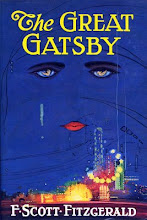Daisy is, no doubt, Gatsby’s dream because she represents perfection, wealth, sophistication, and grace in his eyes. Underlying her skin deep charm, however, is a character of even deeper proportions. Matter of fact, she has proven herself to be shallow, careless, and superficial when she dumps Gatsby for Tom and lets Gatsby take the rap for killing Myrtle; she also fails to attend Gatsby’s funeral, showing just how irresponsible she is as well.
Tom Buchanan’s mistress, Myrtle, believes in wealth and luxury as well as being a forward-looking character; continuously looking to improve her living circumstances.
Both women together have been entitled to Tom’s rough treatment and also have similar personalities and principles. They both have an obvious love for money and are faced with the same marital dilemma, being partially satisfied with the person of whom they are married to. However, they differ greatly; from Myrtle, knowing exactly what she wants in life; to Daisy, no quite sure, and otherwise deeply confused, on which path she ought to choose.
Effectively, Daisy and Myrtle show just how the women of the 1920s seemed to be reflected; from wealth and power, to materialistic love affairs.












































